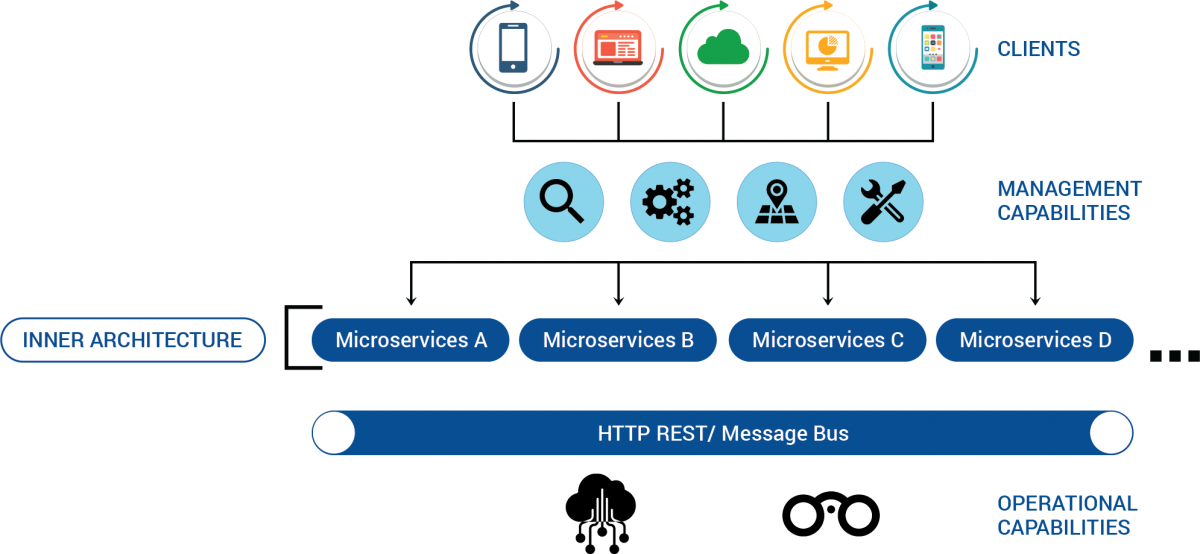As technology leaves its mark with every breakthrough, the world is forced to follow its footsteps in order to remain one step ahead of their competitors and not be left behind.
The battle between the Monolithic and the Micro-Services Architectural structure is debatable.
But firstly, let us clarify a few pointers.
As most research states, the Monolithic Architecture is not outdated. Period. The Monolithic structure is much easier to develop, test, and deploy and is best suited for smaller or simpler organizations which can work on a single framework so that all their features can be placed together on a single database hence avoiding the hassle.
Micro-Services, on the other hand, is basically a monolithic structure which has been broken down into individual components, each micromanaging their own data, therefore, efficiently balancing the load while performing multiple functionalities with ease. Micro-Services is best suited for large or complex organizations who are facing manifold difficulties due to the continuous deployment and redeployment each time an update is required.
So why should you migrate to Micro Services?
In order to address this, let’s take an example of a business or an industry, at large.
For instance, a BFSI Industry has multiple clients and in turn, offers them various services. Now, what if, they start a new service and need to make this new change on their application (which is btw built on a Monolithic Framework). Could it be done? Well, yes, but the real question is, within how much time.
This actually, is one of the significant issues with a Monolith Framework. Even if a minor component of the application needs an update, the entire application needs to be repackaged together. This consumes a lot of man-hours and makes no sense, especially when a more accessible alternative is present, i.e., Micro-Services.
Micro-Services are efficient when it comes to their individual duties. They have the ability to perform operational tasks such as Automation and can ensure active monitoring by efficiently communicating with each other or share messages among themselves via a stateless server such as REST (REpresentational State Transfer) or a Message Bus. Additionally, if an individual component needs to be updated, it is not at all necessary to disturb the entire application. The singular component can be updated and tweaked as required and again redeployed with ease.
The Micro-Services Architecture

As you can see in the diagram above, the Micro-Services Framework basically helps an application by allowing its components to independently dependent on one other.
A technical segregation is done based on their functionalities, which helps the application to focus on individual capabilities, which can also be termed as individual Micro-Services. These Micro-Services are architecturally small and hexagon shaped, and can capture their individual data on their own database while executing their functionalities, which are connected via an API Gateway. This Gateway is responsible for all API related monitoring and metering and additionally among other tasks, helps connect to all the internal processes, therefore automatically connecting the entire system.
Benefits of Micro-Services:
Simple Architecture – Unlike the Monolith, Micro-Services consists of independent components, operating individually while connected on a shared interface. Therefore, each component can be built and scaled singularly, making it extremely simple.
Compartmentalization Strategy - In case an update or upgrade is required, the developers are aware of where to precisely concentrate on, hence saving time while increasing speed and efficiency.
Independently Function –Since each singular components focus on a particular functionality; it is easier to help monitor and increase the efficiency of them individually.
Immediate Fault Isolation - Suppose if a particular component requires immediate attention, it is not at all necessary to shut down the entire application. Micro-Services can immediately isolate the fault.
Technology Adoptions – With the Monolith Framework, developers would have to make their technological choices before the beginning of a particular project, however, with Micro-Services in the picture, this technological barrier is greatly reduced as now developers can adopt new technologies based on particular functions, with an end goal of enhancing services.
What is the CIGNEX Edge?
Micro-Services are the talk of the town today. Everyone is focused on migrating to Micro-Services and yes, CIGNEX too can help you do the same. But why choose us? Well, we at CIGNEX believe in setting processes. The smoother the process the better the user experience.
With Micro-Services now gaining momentum in the market, CIGNEX has developed an automated process wherein organizations can easily migrate from Monolith to Micro-Services.
Build on a fully agile and flexible spring boot + Micro Services Architecture, we can assure you that this automated process can definitely help you increase your organizational productivity by 20%.
Whether you are migrating from a Liferay 6.1 / Liferay 6.2 or any other Java Framework, you can be rest assured that we have got you covered.

